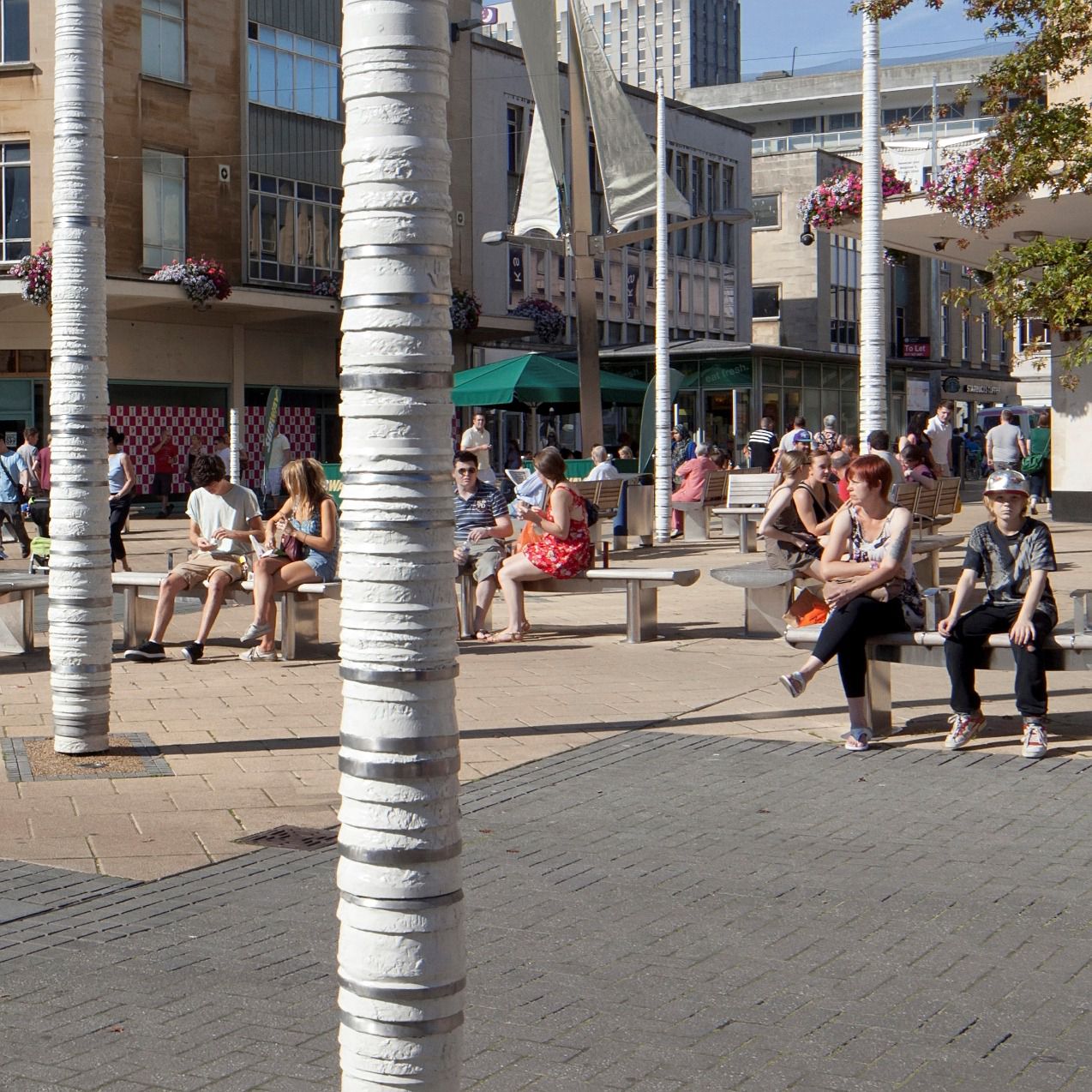
Synopsis
Ten tripartite perforated steel beacons set among fountains, commissioned by Bristol City Council as part of a £4m harbour-side regeneration project. When lit internally, the beacons lose all materiality and become translucent bodies of light.
Description
Seven beacons stand 6m high, three stand 9m high. Each beacon has 10 luminaires addressing the inner and outer surfaces of the segments, and the fittings are individually programmed to create a wide range of appearances, moiré patterns and colour mixes.
The commission grew out of previous pieces including the Docklands roundabout piece, a virtual work proposed for the top of Brick lane and a work proposed for Plymouth Harbour. The idea of starting with a compass and using perforated steel, rather as a scrim is used in theatre, developed into the works in existence.
Martin Richman
Martin Richman’s work addresses issues concerning light, colour and space both in the private and public realms. Richman creates spaces which deal with moments of seductive promise and frustration; the spaces are often physically unattainable yet imaginatively inhabitable.
As well as a strong studio practice and producing work for exhibitions and private houses, Martin Richman has done many public projects from stand-alone sculptures to collaborative works with architects and engineers. Richman is well known for the transformation of Tyseley Energy From Waste Facility, Birmingham (1997) in collaboration with architect Ray Perry that received a RSA award.
